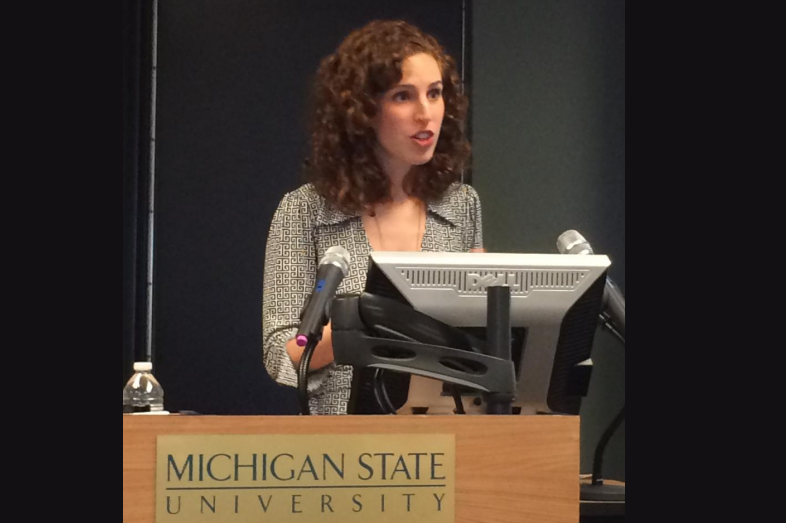

If 49 multiplied by 5 is 245, why would a student think the answer is 405? And who is more likely to know this – a mathematician or an elementary math teacher?
Elizabeth Green, the author of “Building a Better Teacher: How Teaching Works (And How to Teach It to Everyone), posed this question to a roomful of education reporters at EWA’s October seminar in Detroit.
The answer, Green said, is the teacher.
While a mathematician might know more about the numbers, the teacher must be able to quickly diagnose why the student reached the wrong conclusion, and guide him back in the right direction – without giving away the correct response to the original equation.
“Teaching requires specialized knowledge. You can’t just be really smart,” said Green, co-founder, CEO, and editor-in-chief of the nonprofit Chalkbeat education news outlet. “But we do very little in this country to help [teachers] acquire this talent.”
As a result of insufficient instruction, generations of students have graduated with a warped knowledge of math, especially in a real-world context, Green argued.
“The problem is not the kids; the problem is school,” Green said. “School has turned math into something that doesn’t make sense.”
One example: Several years ago, the fast food chain A&W tried to sell a new, “one-third pounder” burger. But customers, believing it was smaller than McDonald’s quarter pounder burger, didn’t bite. The confusion, Green explained, came from people believing the McDonald’s burger was larger because four is a bigger number than three.
Another issue that Green explored in her book is how perceptions of teaching as a “private” or “public” enterprise influence the quality of instruction. In Japan, for example, teaching is seen as a “public good,” Green said. Professional development is a relatively open process: Japanese teachers and professors of education regularly team up to watch educators teach, and then talk about the lesson in group discussions.
Conversations like these are critical, Green said, because they help teachers expand their knowledge about teaching, which often leads to innovation in the classroom.
“This is dramatically different than teaching in the United States,” Green said. “In this country, we treat teaching like Victorian-era sex. It is off-limits and private.”
That “off limits” attitude means teachers are not adequately prepared for the rigors of classroom instruction, or to help students fully understand the content they are expected to master. To improve the situation, Green said schools should encourage collaboration and provide opportunities for observation and feedback. That might mean sharing lesson plans, rotating teachers among students, and sitting in on each other’s classes while they teach so they can do peer reviews.
The many nuances of teaching provide an array of stories for reporters, several of which Green suggested during her session. She encouraged education reporters to delve into the “nitty gritty” of how schools use their allocated instructional time, how teachers are selected or recruited, and the types of materials and technical resources available to them.
She also encouraged journalists to be open-minded as they learn more about teaching.
“Everything I thought I knew about education was wrong when I started to learn about teaching,” Green said. “Reporting this book helped me make sense of the electrified debate about education.”